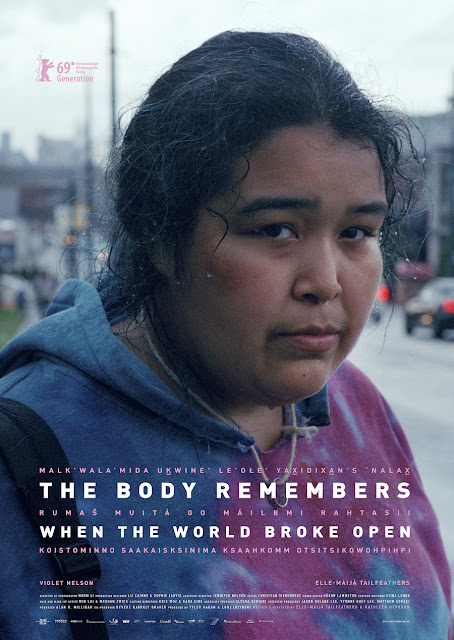This review is not going to contain spoilers but it is going to talk about the film in detail so if you wanted to watch it and feel like this would spoil it for you, then here is your warning to stop reading and go and watch the film. As of the date of this post, this film is currently still on Netflix in the UK so you should check it out!
Also, there are brief mentions of domestic abuse in this post. If this is something that you are uncomfortable with or unable to cope with, I won't blame you for skipping it. Take care of yourself.
*
I'm making more of an effort to look at and review films by women that may have flown under the radar for a lot of people. I love finding out about films I'd like to watch and then realising they are on Netflix in the UK. What disappoints me is that I would have no idea that this was the case unless I found out about it from Twitter, because they often don't advertise these films on the front page. That was the case with the film I'm reviewing today, The Body Remembers When The World Broke Open (2019), directed by Elle-Máijá Tailfeathers and Kathleen Hepburn.
 |
| Source: Oslo Pictures |
The Body Remembers follows two indigenous women: Áila, who lives a stable domestic life, and Rosie, a working class woman who is thrust into Áila's life after she finds Rosie in the aftermath of violence from her boyfriend. This film follows these women who have very little in common - they come from different class backgrounds, they dress and speak differently, they view the world in entirely differently ways. Whilst this trope of having two characters who exist in opposite spheres interact is not new by any means, having two indigenous women on screen who talk and have opinions is. It is rare that we see stories from this perspective told.
This is a very gendered story. The only men we even vaguely see are the two women's partners and even then, they are shown at a distance. Both women have some kind of contact with motherhood and their apprehensions about bringing children into their lives. Furthermore, this story focuses on one of the women attempting to escape a domestic abuse situation at the encouragement of a woman she has never met before. This story draws the viewer's attention to the lived reality that indigenous women are more likely to experience this kind of violence. According to Public Safety Canada, they are approximately 3.5 times more likely to experience some form of spousal abuse than non-indigenous women. This story is difficult to tell but needs to be told to reflect on the treatment of native people in the modern day, and that our treatment of these people and the subsequent invisibility of these women is a tragedy.
This film is able to convey how class is tied to race and how this can affect what systems of care are available to different people. Throughout, Rosie asserts that she has had to survive oppression in many forms, including that of the police. In contrast, Áila is shown to have a middle class life, and her first response to the situation is to call the police, which Rosie adamantly rejects. In fact, Rosie seems hesitant to trust any system that Áila suggests, including the women's shelter that seems like a place of safety.
 |
| Source: Seventh Row |
The body and trauma become connected in this film. Both women are dealing with the racial and generational trauma that their people have experienced, but the extent that they are experiencing the present day result of this is very different. Rosie's body is physically harmed in this film; simultaneously she is pregnant, carrying a child that she may be bringing into a violent space. None of the violence we see, though the aftermath of it is shown on screen, allowing these women respite from what they have experienced for the short period that they exist in the same space. The violence that permeates this space remains beneath the text.
Long takes in this film are used make the audience really feel the length of time Áila and Rosie spend together, the awkwardness they feel in each other's presence. The camera often swings between them, separating and connecting them in their experience throughout the course of a single day. Whilst using these techniques is intended to offer us no respite from the feeling of tragedy and dread throughout, what it does allow is the audience to breathe in the more quiet moments, when there is no dialogue, sit with them as they try to articulate the pain and frustration affecting them.
The Body Remembers is a devastating and stunning text, forcing the audience to reckon with the violence they have been accustomed to overlooking. It is both empathetic and realistic in its portrayal of domestic violence, how people make choices based on their previous experience, rather than what it necessarily best for them, whilst simultaneously never blaming the characters for making these choices.
*
Thank you for reading this post! If you enjoyed it, please consider donating to my Ko-fi. It's a one time donation of £1 and it would really help me out x
Sources:
Public Safety Canada, Marginalized: The Aboriginal Women’s experience in Federal Corrections. Government of Canada, <https://www.publicsafety.gc.ca/cnt/rsrcs/pblctns/mrgnlzd/index-en.aspx> [accessed 28/01/2021]